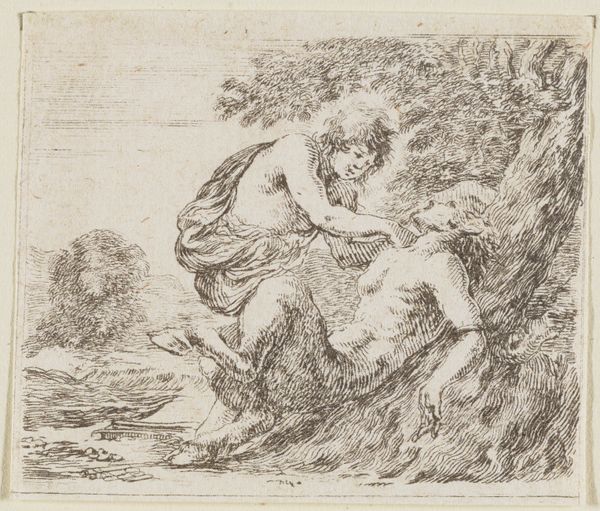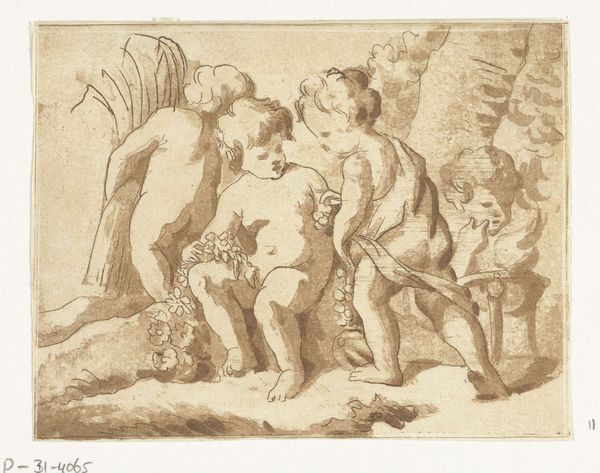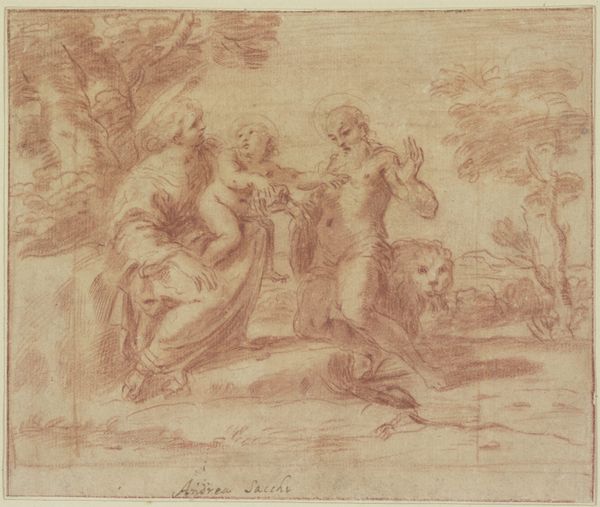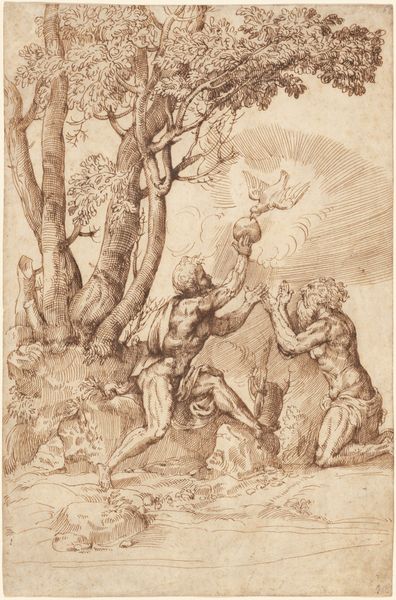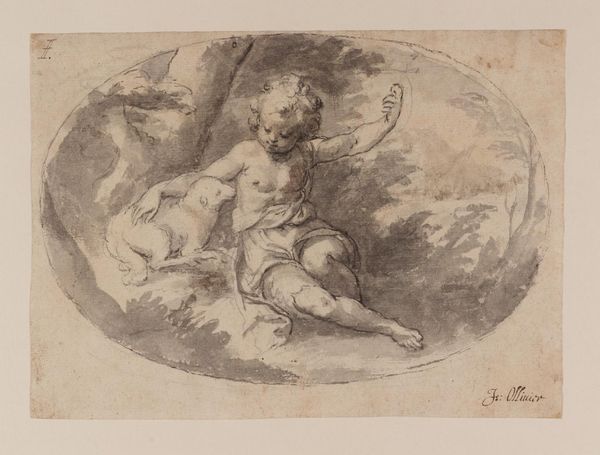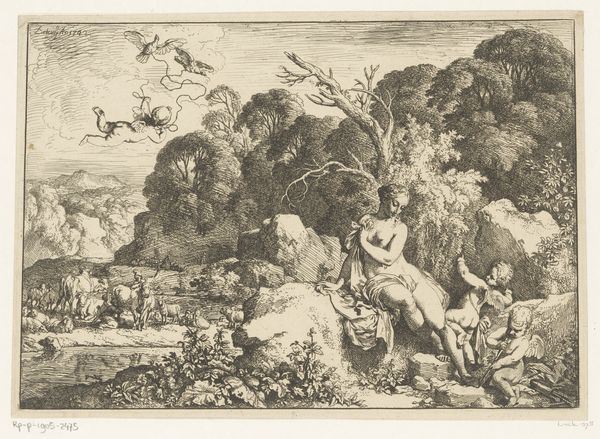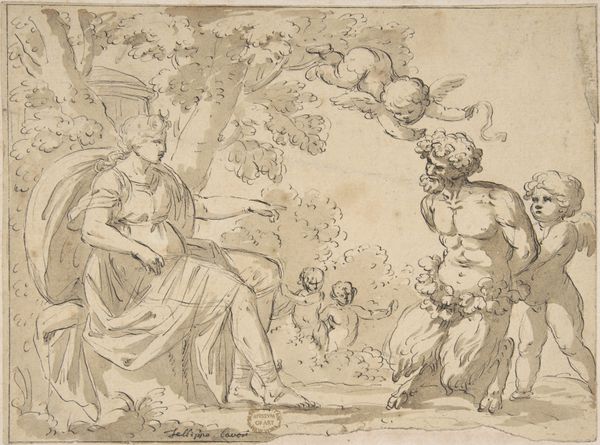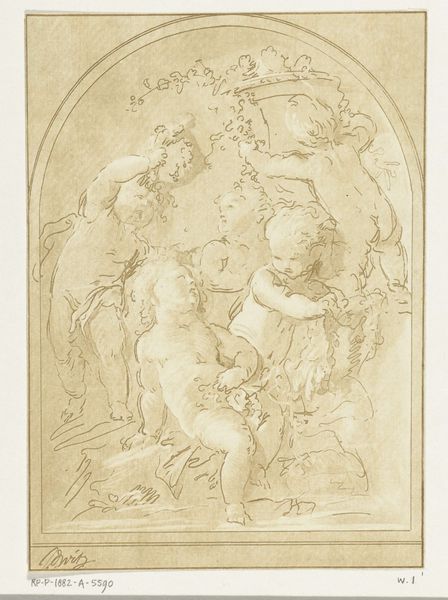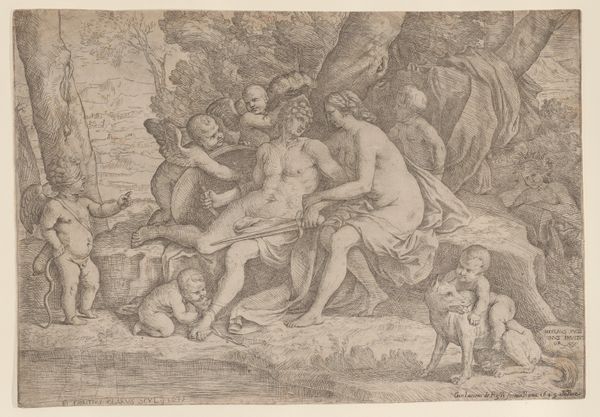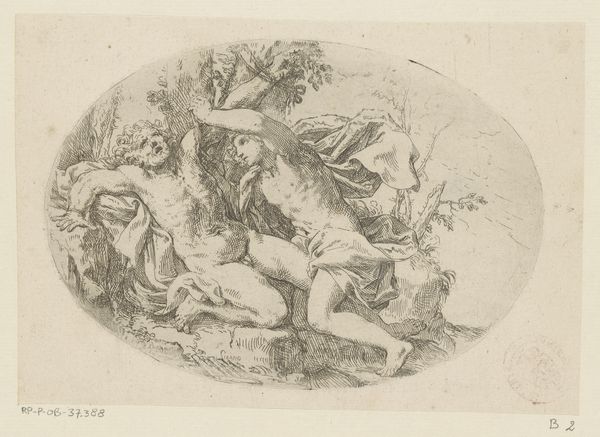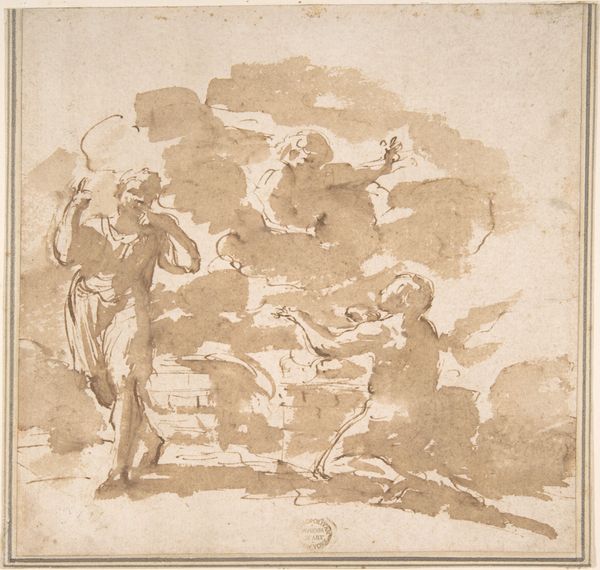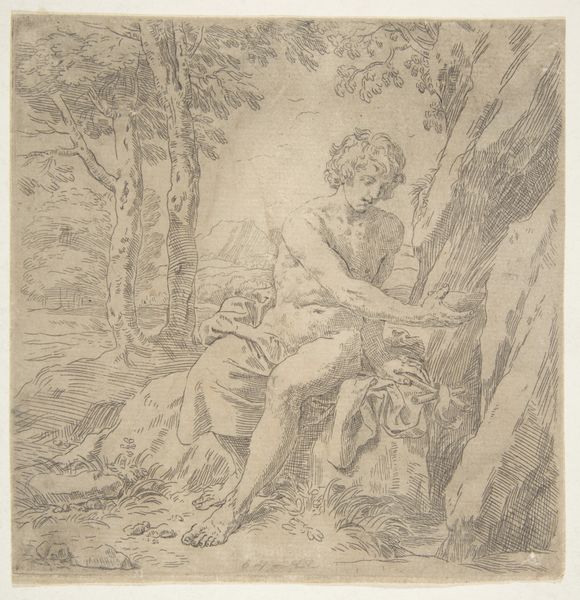
drawing, print, etching, ink
#
drawing
#
baroque
# print
#
etching
#
landscape
#
figuration
#
ink
#
genre-painting
#
nude
Dimensions: Sheet: 3 11/16 × 4 13/16 in. (9.3 × 12.2 cm)
Copyright: Public Domain
Editor: Here we have a 17th-century etching and ink drawing called "Bacchic Putti," unsigned. The rendering is incredibly detailed, especially the landscaping and figures. It strikes me as joyful but with this underlying sense of...intoxication, maybe? How do you interpret this work? Curator: It's important to recognize the social and historical context of the era that gave rise to such art. These weren’t simple decorative pieces. What seems joyful is actually charged with socio-political meaning. Considering its title, do you recognize any signifiers? Editor: Well, “Bacchic” implies a connection to Bacchus, the Roman god of wine and ecstasy…so the nude figures might represent Bacchic revelry? Is it suggesting something about freedom or escape through intoxication? Curator: Exactly. Think about 17th-century European society: rigidly hierarchical, deeply religious. Bacchic imagery offers a glimpse into the transgressive desires simmering beneath the surface. Are the figures purely innocent, in your opinion? Editor: Not necessarily, especially given the reclining figure almost hidden among the trees. But it's also easy to see them just as putti, decorative cherubs symbolizing love and fertility. It feels…complex. Curator: Precisely! The landscape itself contributes. It isn't just a backdrop. The untamed, almost chaotic forest reflects a world free from societal constraints, where bodies and desires could theoretically roam free. Where does this take your thoughts on class and societal freedom, seeing as most could not afford access to such freedoms or even artwork at all? Editor: That’s a crucial point. For those who had the leisure to engage with artwork such as this, even in reproduction, Bacchic imagery offered a safe space for exploring alternative social structures. For most, it would just be out of reach. Curator: Yes, it becomes a symbol of the luxury of free thought. It can certainly be seen as controversial. The painting really encourages conversation regarding historical context. Thanks for engaging these questions. Editor: Thank you for framing this artwork and for pointing out the layers of meaning. I definitely view it differently now.
Comments
No comments
Be the first to comment and join the conversation on the ultimate creative platform.
